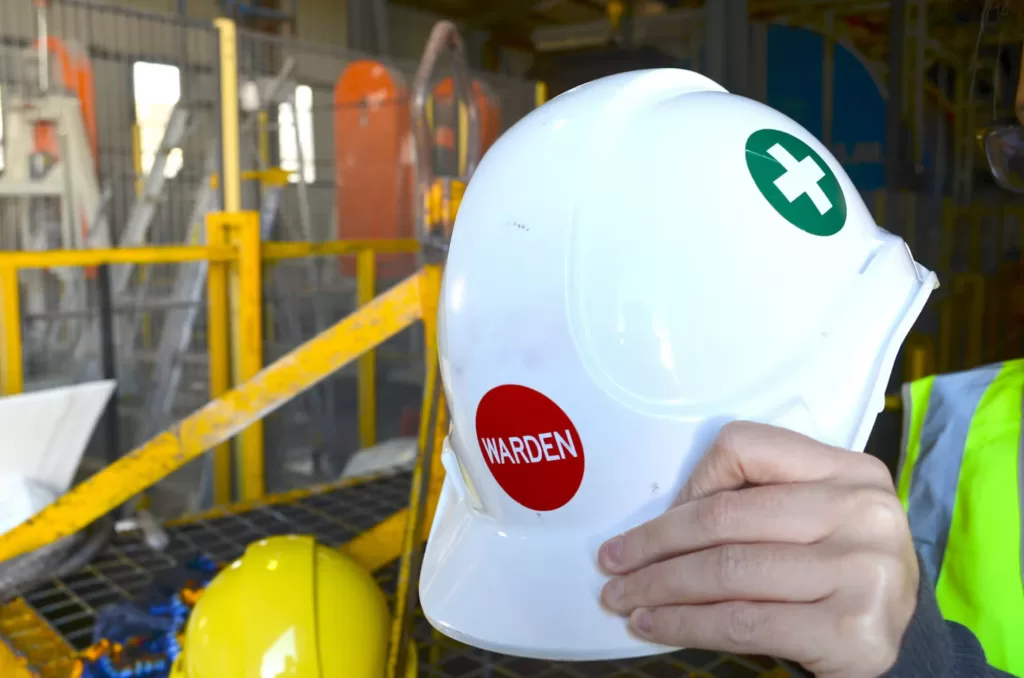Laser cutting is a precise and efficient way of cutting materials such as metal, wood, and plastics. This process involves the use of a high-powered laser beam to melt, burn, or vaporize the material being cut, but it can also be dangerous if the right safety precautions are not followed.
Here are some potential safety hazards to look out for in your laser cutting job shop.
Fire Hazard: Laser cutting aluminum and mild steel
One hazard associated with laser cutting is the potential for a fire. This is especially true when cutting aluminum and mild steel. When these two metals are cut together, they create a dangerous byproduct known as ferrite. Ferrite is a mixture of aluminum and steel powder that can ignite and cause a fire. To prevent these types of fires, it’s crucial to separate aluminum and mild steel when cutting.

In the event of a fire, it’s essential to have a fire extinguisher that can put out a metal fire. These types of fires cannot be put out with water, and using the wrong extinguisher can make the situation worse. A class D fire extinguisher is the most appropriate type for this type of fire, and should be kept on-site in your laser cutting job shop.
Nitrogen hazard: Oxygen deficiency
When cutting large jobs with nitrogen in a small, confined space, it can lead to a health hazard. Nitrogen is not poisonous, but it reduces the oxygen content, which can lead to oxygen deficiency. This deficiency can cause drowsiness, which heightens the risk of tripping and workplace injuries. Additionally, it is not safe to run industrial equipment in a drowsy condition.
This hazard is especially true for small workshops that are becoming more common in laser cutting. It’s essential to ensure that proper ventilation is in place to prevent nitrogen buildup.
An oxygen sensor is a tool that can be used to monitor the oxygen levels in the workspace. This sensor can help identify when nitrogen is becoming a problem and when it’s time to take action.
Nitrogen is an odorless gas, so you won’t have any indication from your sense of smell, as to when the Nitrogen content is reaching unsafe levels.
High-pressure nitrogen hazard: Noise exposure
Using high-pressure nitrogen can generate very loud noises as it exits the nozzle. Prolonged exposure to these noises can cause ear damage. It’s essential to wear hearing protection when working with high-pressure nitrogen to prevent hearing damage. There are apps available on mobile phones to monitor decibel readings and help identify when noise levels are reaching dangerous levels.
Laser safety
All Class 4 lasers should be completely enclosed, and all operators should wear safety glasses designed specifically for the wavelength of light from the laser. Most countries have a laser safety standard, and in Australia, it is the law to keep a copy of the standard on the premises and to have all operators trained in laser safety.

Forklift safety
Risk analysis in a laser job shop is very likely to show that the forklift is one of the most dangerous pieces of equipment on site, if not used correctly. A risk that is often overlooked is the effect of continually dragging the tines on the concrete floor. This causes the tines to wear and become weaker than their design strength, leading to failure on one or both tines. If one tine fails, the load will shift sideways, creating an extremely dangerous situation. It’s essential to ensure that all forklift operators are licensed and trained in proper forklift safety procedures.
Cutting plastics
Cutting plastics can also be a hazardous process. Teflon generates hydrofluoric acid fumes, which can cause chest tightness, choking, coughing blood, rapid pulse and more health issues. PVC cutting generates hydrochloric acid and toxic fumes. It’s important to check the material data sheet for the product being cut to determine what is generated when combusted. This information can be used to identify potential hazards and take the necessary safety precautions.

![]()
In conclusion, laser cutting is an excellent method for cutting materials, but it’s essential to take safety precautions seriously. Understanding the potential hazards associated with laser cutting can help you prevent accidents and injuries. Always follow safety guidelines and ensure that all workers are adequately trained in laser safety procedures.
Author: Bruce Thomas, Executive (Product)





